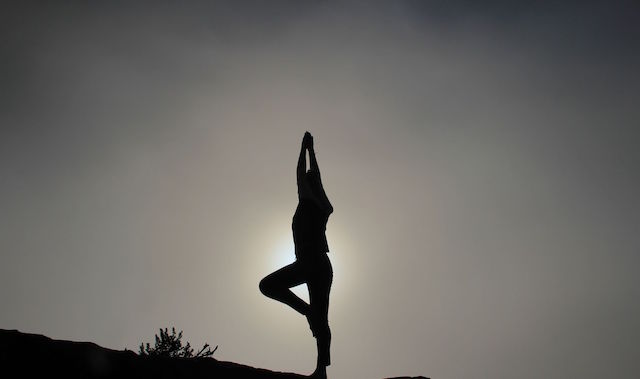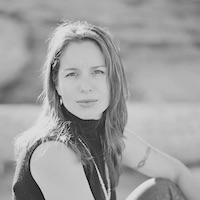Eleditor’s note: Elephant is a diverse community of sixteen million readers and hundreds of writers (you can write too!). We are reader-created. Many blogs here are experience, opinion, and not fact or The One Right Point of View. We welcome all points of view, especially when offered with more sources and less invective, more frankness and less PR. Dislike this Op-Ed or opinion? Share your own take here.
If you love yoga like I do, you may be inspired to learn how to teach yoga.
Or maybe you already are a yoga teacher.
Do you ever wonder what makes yoga teachers successful?
What obstacles they face?
How many traps they encounter along their journey to teaching?
Let me share some of what I’ve learned after 10 years of teaching yoga.
Here in North America, it is not a very complicated journey to become a yoga teacher—it can be done in four to six weeks. In most Indian and European schools, this very same process can take four to seven years.
One might wonder, how is that possible? What are we doing to this ancient tradition?
I believe this conversation is important and surely it is time to unite our values.
As yoga teachers, we carry the title of an ancient tradition. It doesn’t matter if we teach in a gym, volunteer in a retirement home, or hold an important title at a prestigious yoga school with pictures of many generations of gurus on the wall.
If we wish to maintain the integrity and reputation of this tradition, I suggest we start by considering the following ten points. Let us call them the “now written” ethics of teaching yoga.
- We practice what we teach. No matter how late, how early, how often, how long, but we practice regularly. As long as we call ourselves a teacher, we remain primarily a practitioner. No excuses.
- While taking another teacher’s class, we demonstrate what it means to be an ideal, perfect student. Doing exactly what they say, when they say it and how they say it. “Be the student you want to teach” was the first lesson at our teacher training. Trust me. Every judgment, lifting eyebrow, every “I know better,” “I have more experience,” “this feels better to me now,” and “check out my advanced posture” is nothing but your ego’s game and will return to you in your next class. Good luck trying to maintain collective energy. So, be a good student. Period.
- We don’t invent anything new about Yoga. We don’t need to re-create yoga. It’s a 5000 year-old, perfect system as it is. We just need to learn it. Inventions and our own ideas are confusing for future students, dilute the tradition and sabotage the very foundation of the path. Dance is not yoga, it’s dance. Walking is not yoga, it’s walking. Pilates is not yoga, it’s pilates. They are all fantastic things. But they are not yoga.There is a great crowd of people in our world who believe that the postures we practice on our mat is yoga. It is our fault. Those are the asanas, one of the eight limbs of yoga only.
- We should familiarize ourselves with all eight limbs of yoga. Unless we understand the wholeness of Patanjali’s system, we can only call ourself an “Asana teacher.” Again, that is incomplete and not in agreement with the eight-limbed path. Postures are practiced to prepare the mind to settle. Settle your mind.
- We take ourselves seriously. We are professionals at what we do. When a student stands or sits in front of us, we understand their vulnerability and take full responsibility for them. No, we are not there to “ just hold space” for them. That is a very lazy attitude, the easy way out. They came for help. They have back pain. Tight shoulders. Injuries. A wild mind. It is our absolute responsibility to do our best to help. We are to teach them asana, breathing, meditation—all the tools yoga offers.Don’t just sit around and “wish them well.” Sri Yukateshwar was strict. Pattabhi Jois was furious. B.K.S. Iyengar was passionate. If you don’t know who they are, go back to teacher training. Or pick up a book. (4th Niyama: Svadhyaya, or self-study and reflection on sacred words.)
- Each and every class is an opportunity to heal, to make a difference. No two classes are the same because in each case, there are different people. Focus on the people. It’s not about the teacher. If we find ourselves bored, feeling burnt-out, annoyed, make sure to take a break from teaching and return to being a practitioner only. We must be able to find our love and connection for this system, the very reason why we became a teacher in the first place.
- When the class is over we let our students go. They are not our friends or buddies. We learn to create clear boundaries and understand that we can help best if we maintain some distance between student and teacher.
- We demonstrate being a yogi all day long. Our behaviour at all times is a pure example of what we believe and teach. No, it’s not ok to gossip, lie, hoard or be lazy. Read the Yamas and Niyamas. We are either a Yogi or not. There is no 80/20.
- We practice regular self-inquiry. Asking ourselves why exactly did we choose this profession? We become clear about our intentions, so confusion about sexual energies or any other selfish desires can be left outside the yoga room. At least on our end. It’s even better to find a mentor, someone who is ahead of us on this journey and ask them for feedback. In our studio space we have a hierarchy, based on how long a teacher has been teaching. Their insights and supportive conversation is one of the many blessings we can experience as a team. Let us learn from each other.
- And finally: please, let us respect all other Yoga teachers no matter what lineage they represents. We learn to cooperate with them for the benefit of all humanity. Let other “industries” compete. We will prove that Yoga was meant to save the world. We chose this profession because we believed that at one point. Now let’s do it.
With the intention of raising awareness and support the success of many more Yoga teachers benefit the world.
On this journey, I’ll walk with you and therefore, I am grateful.
~
Author: Orsi Foldesi
Editor: Caitlin Oriel
Image: Patrick Hendry/Unsplash












Read 4 comments and reply